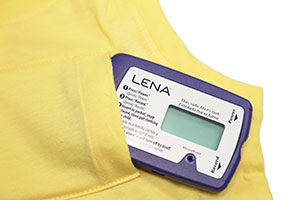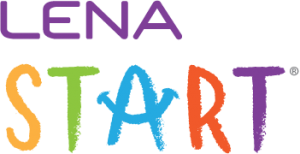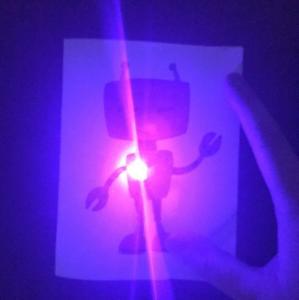Categories
Talk builds babies' brains!
Have you ever wondered how much you talk with your baby/toddler?
LENA Start is an 8-week program that helps parents with children 0 - 32 months increase back-and-forth talk. Weekly sessions combine videos and group discussion to build knowledge and skills that you can put into practice with your child.
How does LENA Start work?

- Attend weekly, hour-long sessions (in-person or virtually on Zoom) *
- Complete one LENA Day per week with the LENA device (Read more about the LENA device here: https://www.lena.org/technology/)
- Upload LENA device using your home computer OR by exchanging at a library
- Receive a detailed report of the amount you talk with your child and track your progress through the program
At the end of the program, qualifying families ** receive:
• 8 children’s books
• $20 gift card
*Your child does not have to attend sessions with you to participate in the program.
**Participants must attend 7 sessions, complete 6 recordings, and return their LENA device.
** IMPORTANT PLEASE READ BEFORE REGISTERING **
LENA Start is open to residents of El Paso and Teller counties only and registration is required.
One child per family may participate. If you have previously completed the LENA Start program, you are not eligible to participate again.
If you are registering for a virtual LENA Start series, it is mandatory to attend the in-person orientation to participate in the program.
In-Person Orientation:
(Attendance at in-person orientation is mandatory to participate in the program and is for registered participants only.)
Thu., Jan. 16, 6:30 - 7:30 p.m. at Library 21c
PPLD is offering TWO virtual sessions in Winter 2025! Registration is open Dec. 30, 2024 - Jan. 10, 2025.
Virtual Evenings
- Tuesdays, Jan. 21 - March 12, 6:30 - 7:30 p.m. Register for Tuesday evenings here.
- Wednesdays, Jan. 22 - March 12, 6:30 - 7:30 p.m. Register for Wednesday evenings here.
The final class for both sessions is an in-person graduation on Wed., March 12, 6:30 - 7:30 p.m.
Future Session Dates
- Spring 2025: April 15/16 - June 4 (Registration opens March 24.)
- Summer 2025: July 1/2 - Aug. 19 (Registration opens June 9.)
Starting Friday, Feb., 5, 2021, visit your favorite Library location to pick up a Take & Make (materials for the program), while supplies last. For ages 9-12.
Watch this project at: https://youtu.be/YVNFFC8UttI.
Supplies:
- Card printed on cardstock
- Button cell battery
- LED light
- Copper tape
- Colored pencils or markers
- Tape
- Thumbtack
- Pencil, or pen (to poke a hole in the cardstock)
Directions:
- Color in the template first
- Use a thumb tack, pencil, or pen to poke a hole through the middle of the robot’s heart (for the LED light to go through).
- Fold the card in half.
- Lay the copper tape along the two paths (polarities) of the circuit, following the diagram. Leave space at the corner where there’s a drawing of the LED light. Reserve some copper tape for step 6.
- Add the LED light by inserting the wire legs through the hole on the front of the card and bending the wire legs to reach the circuit path. Match the shorter wire leg with the negative path (the copper tape leading to the circle) and the longer wire leg with the positive path (the copper tape going through the dotted “fold” line. Don’t worry if your LED light placement doesn’t exactly match the drawing on the diagram – as long as the leg wires of your LED light connect with the copper tape, it should work.
- Secure the legs of the LED light using small pieces of copper tape.
- Add the battery negative side down inside the circle on the template and secure it by taping only the half closest to the LED light down to the card. If your battery is smaller than the circle on the template, center it in the middle of the circle.
- Fold the corner of the card over to create a switch to turn the card on and off.
- If you want, write a greeting in your card, and give it to someone special.
Birding is a great way to engage with nature safely, relieve anxiety, and otherwise slow down. Download your Birding 101 guide here!
- Do not disturb the birds’ habitats - you are an observer.
- Use appropriate gear! Binoculars, a field guide, and a notebook should suffice for beginners.
- For those with mobile devices, try the Audubon Bird Guide App for iPhones and Androids!
- Find a quiet spot to sit and observe. Your backyard can offer quite a selection!
- Try different times of day.
- Find other birders in the community!
CHECKOUT THESE LIBRARY MATERIALS FOR YOUR BIRDING ADVENTURES:
- Books on Birding are available on Overdrive/Libby
- Check out Colorado State Parks Pass
- Try one of our databases or suggested websites
- Books in our nonfiction collection with the number 598.07234





